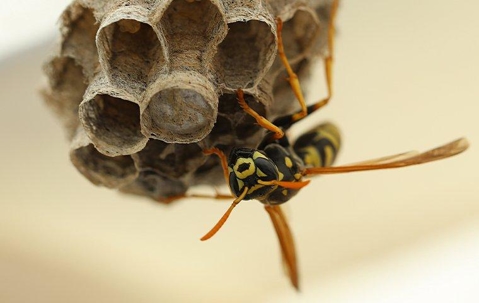As we head closer and closer to July, bees, wasps, and other stinging insects are bound to be more active. These pests can make any summertime traditions miserable, from picnics to barbeques to other family events, stinging insects can put a damper on any gathering.
Most stinging insects play strategic parts in our ecosystem as they eat other insect pests and pollinate both crops and flowers, as they constantly work to provide for the members of their nest. These pests will usually only become aggressive if they feel that they are being threatened or that their nest is in danger.
The most common stinging insects in North Texas are the paper wasp and the yellow jacket. Wasps are broken down into two distinct categories: solitary ones, which live alone, and social ones, which live in large numbers within a single nest. Paper wasps and yellow jackets are both considered social, but they are different in many ways.
- Paper wasps build nests that are paper-like and shaped like an umbrella. They are large wasps with brown or black bodies and orange or yellow markings. Paper wasps are most easily identified by their thin, “dangling” legs and cinched waists.
- Yellow jackets build nests in protected areas like porches, soffits, trees, stumps, shrubs, burrows, and holes. The nests are made from wood fiber that they chew up into a pulp substance. These wasps grow to about ⅝” long and are hairless. Their heads are black or yellow and they have a yellow and black banded pattern; their waists are thin and defined.
All wasps will defend themselves and their nests by attacking and stinging the intruder. They can sting a victim multiple times because their stingers are smooth. A wasp sting has venom that can be painful and cause raised red bumps, and can sometimes even cause a severe reaction for people who are allergic. Stinging isn’t the only thing you have to worry about when dealing with stinging insects, however; carpenter bees can damage wood-type products in and around your home, which can result in expensive repairs. Regardless of what type of stinging insect, it is best to remove them from your home before they become a major problem.
Here are a few simple steps homeowners can take to protect themselves and their families against stinging insects:
- Avoid swatting at stinging insects, as that will make them become more aggressive
- Wear light-colored clothing when you are outdoors; avoid bright colors and floral prints
- Do not use scented perfumes, toiletries, detergents, or dryer sheets
- Keep foods and beverages covered at all times
- Clean up food and drink spills immediately
- Keep an Epi-Pen on hand if you or anyone in your household is allergic
- Do not attempt to remove a wasp nest yourself
For help getting rid of stinging insects and nests in your North Texas home and property, contact the professionals at Adams Exterminating. We are equipped with the knowledge and tools to get the job done safely, efficiently, and effectively. Contact us today to learn more about our residential pest control options.

